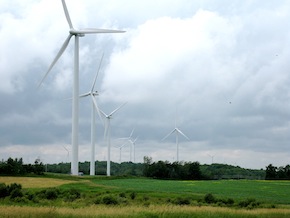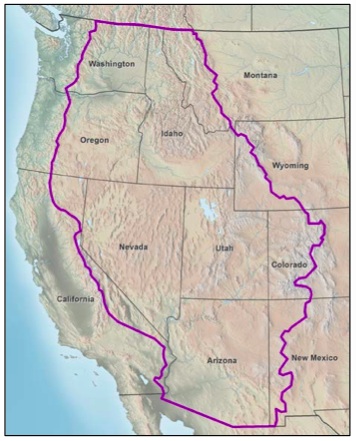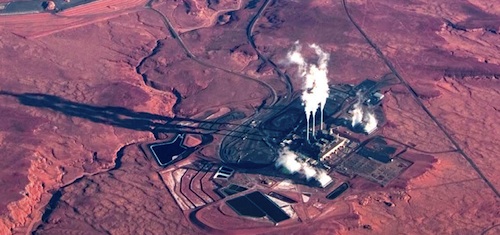Water and electricity do mix

The Gordian knot of interdependence between water & power (not the political kind — that’s another story) has been getting a lot of attention lately as the “water-energy nexus.” A new report from Oakland’s Pacific Institute warns that as population grows and a changing climate further wrings water out of the West, “These trends will intensify water resource conflicts throughout the region.”
Oh, goody. Just what the West needs; more water conflicts.

Defined by topography and climate, rather than political boundaries, the report focused attention on a region that takes in all of Idaho, Nevada, Utah and Arizona, and portions of seven other states, including a narrow vertical slice of California.
The authors calculate that power plants throughout the region “withdrew” (note that this doesn’t mean “consumed”) more than 1.1 million gallons of water each day to keep running, or about twice the amount that the City of Los Angeles uses in a year.
They further reckon that:
“Under current trends, by 2035, water withdrawals and consumption for electricity generation in the region are projected to increase by 2% and 5%, respectively, over 2010 levels – but water availability is already affecting power plant operations and siting in the Intermountain West.”
The report also catalogs how water is slurped up by the use of fossil fuels in particular, in extraction, refining and transportation.
The authors suggest that the way out of this conundrum is to move aggressively toward less water-intensive renewable energy, while pushing for more advances in energy efficiency.

It’s worth mentioning that with the exception of wind power, most renewable energy requires some water — even photovoltaic solar “farms” have to be watered, so to speak, if only to wash the dust off the panels.
It’s also worth mentioning that the problem goes beyond just the anticipation of scarce water for cooling “thermal” power plants, which includes coal, natural gas, nuclear, and so-called solar-thermal facilities. The authors also point to more subtle pressures on the energy-water nexus:
“Warmer temperatures reduce the efficiency of thermal power plants and of transmission and distribution lines. More power will need to be generated, and more water withdrawn and consumed, to offset these efficiency losses. Likewise, reductions in hydropower generation and increases in electricity demand associated with warmer temperatures will increase demand for additional power generation and as a result, likely increase water withdrawals and consumption.”
In its 66-page report, the Institute concludes that “these alternative strategies can permit increases in electricity production with a significant reduction in total water demands, reducing pressure on scarce and over-allocated water resources.”
The research, by Heather Cooley, Julian Fulton, and Peter Gleick, was funded by the William and Flora Hewlett Foundation.
2 thoughts on “How Saving Water Could Help Keep the Lights On”
Comments are closed.

This connection should be obvious to all. What most don’t understand is the connection between water and fossil fuel extraction. Whenever someone touts the latest plan to extract oil or gas in a new way, the question that must be asked is where the water is going to come from. Alberta Tar Sands? That will pollute entire lakes. Wyoming / Colorado Oil Shale? It takes so much water that they will have to decide whether to process that or have workers living near the… there is not water enough for both.
But what most Californian’s don’t realize is that it takes a lot of water to extract the very heavy, viscous oil that we have here.
‘In the time since steamflooding was pioneered here in the fields of Kern County in the 1960s, oil companies statewide have pumped roughly 2.8 trillion gallons of fresh water—or, in the parlance of agriculture, nearly 9 million acre-feet—underground in pursuit of the region’s tarry oil.”
Source: http://www.orionmagazine.org/index.php/articles/article/6047/
Of course, no one wants to talk or write about this as part of our water wars. It is much easier to pose this as farmers vs city folks.
Do these researchers calculate the impact on what we will be paying for electricity due to power shortages caused by water shortages? ( See http://www.global-warming-forecasts.com/water-supply-shortage-water-scarcity-climate.php ) How much is this going to cost us above what we would pay otherwise? Are we going to have to pay through the nose because unprepared utilities will be buying electricity on the wholesale market and then passing on the higher costs to customers?